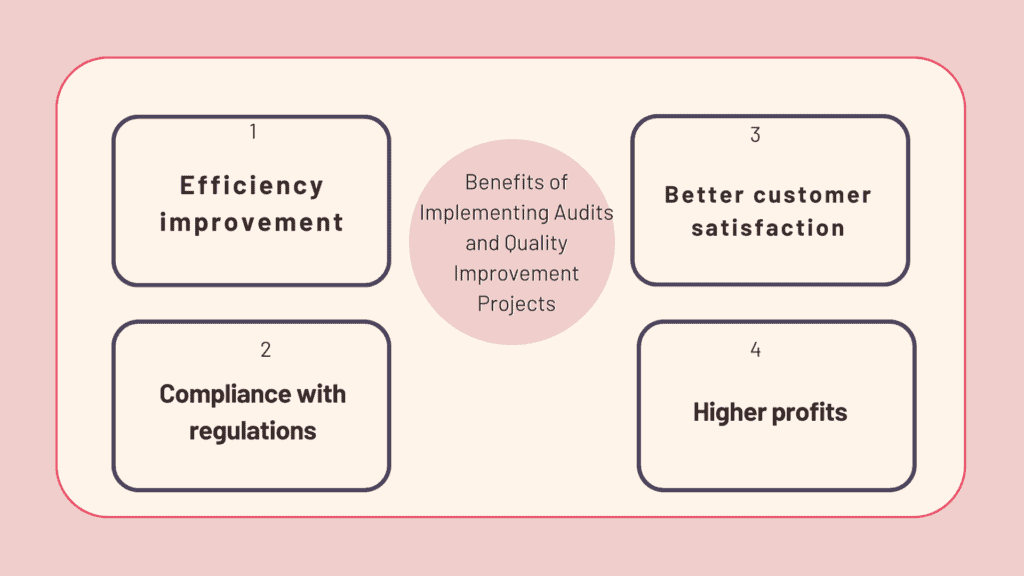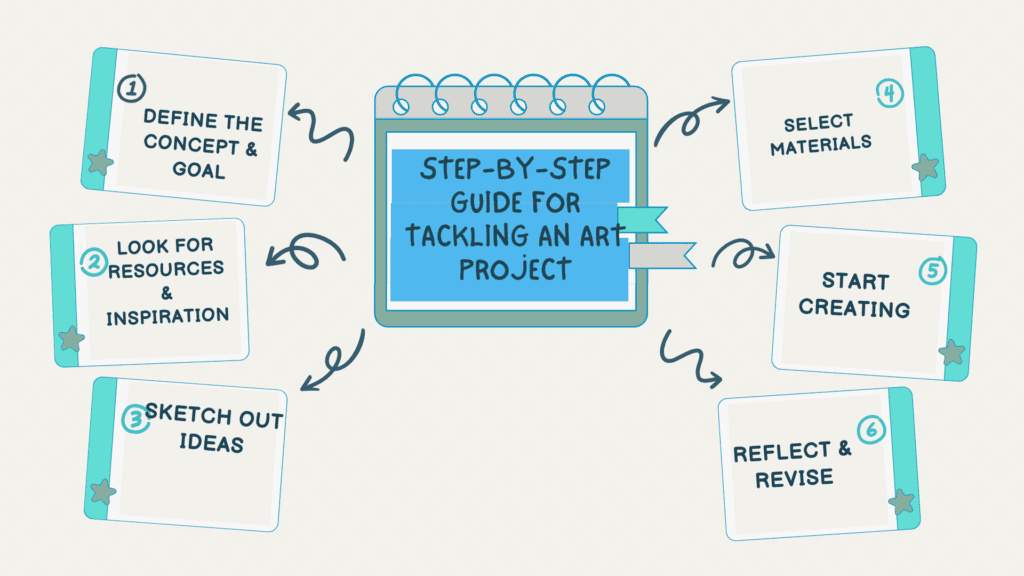Table of Contents
Key Takeaways
- Audits and quality improvement projects are essential for identifying and addressing areas of improvement within an organization.
- Conducting regular audits can help identify potential risks, inefficiencies, and non-compliance issues.
- Quality improvement projects can focus on enhancing processes, reducing errors, and improving overall performance.
- It is important to involve all relevant stakeholders in the audit and quality improvement process to ensure a comprehensive and collaborative approach.
- Utilizing technology and data analytics can streamline the audit and quality improvement process, making it more efficient and effective.
- Continuous monitoring and evaluation of audit and quality improvement initiatives are crucial for sustaining improvements over time.
- Sharing best practices and lessons learned from audits and quality improvement projects can benefit other organizations facing similar challenges.
- Audits and quality improvement projects should be seen as opportunities for growth and development rather than as punitive measures.
- Effective communication and transparency are key in ensuring the success of audit and quality improvement initiatives.
- Investing in training and education for staff involved in audits and quality improvement projects can enhance their skills and knowledge, leading to more impactful outcomes.

Audits are a tool for evaluation and improvement. They provide an objective assessment, examining processes to identify strengths, weaknesses, and opportunities. Auditing practices have evolved over centuries, beginning with merchants validating financial transactions and now covering operations, healthcare, and customer service.
Let’s explore the significance of audits and their role in quality improvement projects. Historically, auditors have ensured businesses follow ethical standards and legal compliances, while helping organizations identify avenues for growth.
Discovering the importance of audits and quality improvement projects is like finding out the only reason your car keeps running is because of duct tape and a prayer. Now, buckle up – we’re going to explore innovative project ideas that use strategic audits to bring about transformative improvements! Are you ready? Let’s go!
Importance of Audits and Quality Improvement Projects
Audits and quality improvement projects are vital for optimizing an organization. By assessing processes, pinpointing areas for betterment and taking corrective actions, audits guarantee that standards and regulations are being met. This evaluation helps to reveal gaps, minimize risks and attain excellence.
Continuous improvement is fundamental to remain competitive in today’s business domain. Through quality projects, inefficiencies in operations can be dealt with proactively. These projects reduce waste, enhance customer satisfaction, and increase performance. Data-driven intelligence and a holistic approach to problem-solving enable organizations to make informed decisions that bring about long-term growth.
Moreover, audits and quality projects promote a culture of accountability within the organization. This collaborative approach gets teams working together towards their shared mission of delivering excellence. Furthermore, it allows organizations to spot opportunities for employee training and development, making sure their personnel remain knowledgeable and capable.
A manufacturing company, suffering from recurrent product defects, serves as a great example. An audit of its production line revealed a broken machine part that was the source of the defects. Replacing this component promptly prevented further problems and improved customer satisfaction. This case demonstrates how audits can detect hidden issues that may not have been noticed otherwise.
Benefits of Implementing Audits and Quality Improvement Projects

Audits and quality improvement projects bring many benefits to organizations. Such as:
- Efficiency improvement: Find areas of improvement to reduce wastage and boost efficiency.
- Compliance with regulations: Regular audits make sure rules are followed, reducing risks.
- Better customer satisfaction: Quality projects focus on meeting expectations, leading to better reviews.
- Higher profits: Optimize processes and reduce errors to increase earnings.
These initiatives also promote continuous improvement and transparency. However, for the full potential of audits and quality projects to be achieved, they must be implemented consistently. Not doing so can lead to missed opportunities and less competitiveness in the market.
Organizations should prioritize audits and quality improvement projects. This will help them stay ahead, meet regulations, and satisfy customers’ needs. Ready to find all the flaws and improve your processes? Here is a list of Audit and Quality Improvement Project Ideas to get you started. There’s always room for improvement!
List of Audits and Quality Improvement Project Ideas

Audits and quality improvement projects can propel an organization towards excellence. To simplify understanding and implementation, we’ve created a table with relevant columns such as Audit Type, Project Description, Desired Outcome, and Responsible Personnel.
This list offers unique insights into different aspects of audits and quality improvement. It provides a holistic perspective to address specific challenges in various departments or processes.
Organizations have relied on these projects to enhance efficiency, reduce errors, and optimize performance. Implementing innovative ideas from this list can lead to remarkable outcomes.
By exploring the diverse range of audits and quality improvement project ideas here, organizations can embark on a journey towards continuous enhancement. This structured approach empowers organizations to make informed decisions that improve operations.
Let’s wrap it up! Audits and quality improvement projects may not be the most riveting thing to do, but hey, at least they won’t make you snore!
Frequently Asked Questions
1. What is an audit?
An audit is a systematic examination or review of an organization’s processes, procedures, and practices to ensure they are in compliance with established standards and regulations.
2. Why are audits important?
Audits are important because they help identify areas of improvement, assess risk, ensure compliance, and enhance the overall quality of an organization’s operations and outputs.
3. What is a quality improvement project?
A quality improvement project is a structured initiative undertaken by an organization to enhance its processes, systems, or services with the goal of achieving improved outcomes and better customer satisfaction.
4. How can I generate quality improvement project ideas for my organization?
You can generate quality improvement project ideas by analyzing customer feedback, conducting process or systems assessments, benchmarking with industry best practices, soliciting employee suggestions, and reviewing audit findings for areas of improvement.
5. What are some common areas for quality improvement projects?
Common areas for quality improvement projects include reducing production defects, enhancing customer service processes, streamlining workflow, improving data accuracy and integrity, and optimizing resource allocation.
Can Art Projects Help Improve Business Performance?
Art project ideas for skill levels can be a valuable tool in improving business performance. Engaging employees in creative activities can foster teamwork, boost morale, and enhance problem-solving skills. Whether it’s a collaborative painting project or a sculpture workshop, these initiatives encourage innovation and stimulate out-of-the-box thinking, ultimately benefiting the overall productivity and success of a business.
6. How can audits contribute to quality improvement projects?
Audits provide valuable insights into an organization’s strengths, weaknesses, and areas needing improvement. By identifying gaps and non-compliance, audits can help prioritize quality improvement projects, set benchmarks, and monitor progress towards achieving desired outcomes.
Conclusion
Audits and quality improvement need to be taken to the next level. Here are some key points to consider:
- Regular auditing helps spot and fix areas that need improvement, as well as staying compliant with industry standards.
- Cross-functional teams make analyses more comprehensive and encourage knowledge sharing.
- Automated audit tools can help streamline the process, increase accuracy and reduce manual effort.
- Feedback loops between auditors and auditees promote ongoing learning.
- Post-audit reviews measure the success of improvements and ensure progress.
To really maximize audits and quality improvement, consider these ideas:
- Train auditors in the necessary skills and knowledge.
- Use data analytics to detect risks in audited processes.
- Compare audit results against industry standards.
By following these steps, organizations will be able to make their audits more efficient and reach ever-higher levels of excellence.
References:
https://www.rcr.ac.uk/clinical-radiology/audit-and-quality-improvement
Also Read:


